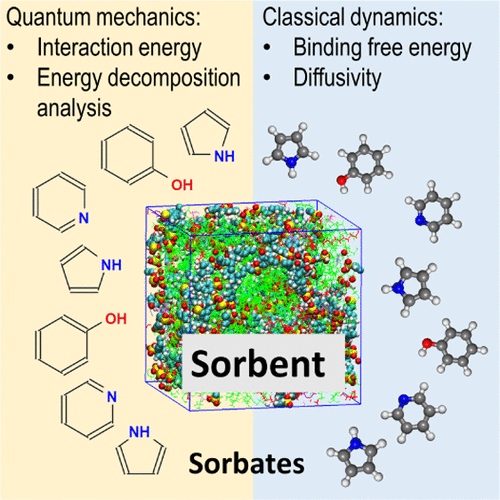当前位置:
X-MOL 学术
›
ACS Sustain. Chem. Eng.
›
论文详情
Our official English website, www.x-mol.net, welcomes your
feedback! (Note: you will need to create a separate account there.)
Computational and Experimental Study for the Denitrification of Biomass-Derived Hydrothermal Liquefaction Oil
ACS Sustainable Chemistry & Engineering ( IF 7.1 ) Pub Date : 2021-09-16 , DOI: 10.1021/acssuschemeng.1c02824 Pradeep Kumar Gurunathan 1 , Difan Zhang 1 , Vassiliki-Alexandra Glezakou 1 , Roger Rousseau 1 , Huamin Wang 1 , Aimee Lu Church 2 , William Beatrez 2 , Michael Z. Hu 2 , Suh-Jane Lee 1
ACS Sustainable Chemistry & Engineering ( IF 7.1 ) Pub Date : 2021-09-16 , DOI: 10.1021/acssuschemeng.1c02824 Pradeep Kumar Gurunathan 1 , Difan Zhang 1 , Vassiliki-Alexandra Glezakou 1 , Roger Rousseau 1 , Huamin Wang 1 , Aimee Lu Church 2 , William Beatrez 2 , Michael Z. Hu 2 , Suh-Jane Lee 1
Affiliation

|
Hydrothermal liquefaction (HTL) is a promising method for processing wet biomass and waste feedstock to produce biofuels. During the HTL process, proteins and other biomolecules in certain feedstock get converted into nitrogenous compounds in the produced biocrude, which represents a major challenge to further upgrading them into fuels. One promising approach is to separate nitrogenous compounds from the biocrude using polymeric resins. In this work, experiments were conducted to downselect sorbent and resin systems using a nitrogen compound-containing surrogate biocrude. We model the binding interactions between an Amberlyst polymeric resin with various compounds present in the biocrude mixture such as nitrogenous compounds like pyrrole, pyridine, hexanamide, and representative co-existing compounds like phenol and dodecanoic acid. To ascertain the efficiency of various resins in the denitrogenation process, we have developed a quantitative structure–function model for the interacting components in the mixture. Our results suggest that the Amberlyst resin is a viable candidate for efficient removal of target nitrogen-containing compounds (such as pyridine) from the biocrude as a result of favorable interactions. The computational studies provide some insight into how and why the identified resin (Amberlyst) works in selective extraction of nitrogenous compound(s).
中文翻译:

生物质热液液化油反硝化的计算与实验研究
水热液化 (HTL) 是一种用于处理湿生物质和废物原料以生产生物燃料的有前途的方法。在 HTL 过程中,某些原料中的蛋白质和其他生物分子在生产的生物原油中转化为含氮化合物,这是进一步将其升级为燃料的重大挑战。一种有前景的方法是使用聚合树脂从生物原油中分离含氮化合物。在这项工作中,进行了实验以使用含氮化合物的替代生物原油降低吸附剂和树脂系统的选择。我们模拟了 Amberlyst 聚合物树脂与生物原油混合物中存在的各种化合物之间的结合相互作用,例如含氮化合物,如吡咯、吡啶、己酰胺,以及典型的共存化合物,如苯酚和十二烷酸。为了确定各种树脂在脱氮过程中的效率,我们开发了混合物中相互作用组分的定量结构-功能模型。我们的结果表明,由于有利的相互作用,Amberlyst 树脂是从生物原油中有效去除目标含氮化合物(如吡啶)的可行候选者。计算研究提供了一些关于已识别树脂 (Amberlyst) 如何以及为何用于选择性提取含氮化合物的见解。我们的结果表明,由于有利的相互作用,Amberlyst 树脂是从生物原油中有效去除目标含氮化合物(如吡啶)的可行候选者。计算研究提供了一些关于已识别树脂 (Amberlyst) 如何以及为何用于选择性提取含氮化合物的见解。我们的结果表明,由于有利的相互作用,Amberlyst 树脂是从生物原油中有效去除目标含氮化合物(如吡啶)的可行候选者。计算研究提供了一些关于已识别树脂 (Amberlyst) 如何以及为何用于选择性提取含氮化合物的见解。
更新日期:2021-10-12
中文翻译:

生物质热液液化油反硝化的计算与实验研究
水热液化 (HTL) 是一种用于处理湿生物质和废物原料以生产生物燃料的有前途的方法。在 HTL 过程中,某些原料中的蛋白质和其他生物分子在生产的生物原油中转化为含氮化合物,这是进一步将其升级为燃料的重大挑战。一种有前景的方法是使用聚合树脂从生物原油中分离含氮化合物。在这项工作中,进行了实验以使用含氮化合物的替代生物原油降低吸附剂和树脂系统的选择。我们模拟了 Amberlyst 聚合物树脂与生物原油混合物中存在的各种化合物之间的结合相互作用,例如含氮化合物,如吡咯、吡啶、己酰胺,以及典型的共存化合物,如苯酚和十二烷酸。为了确定各种树脂在脱氮过程中的效率,我们开发了混合物中相互作用组分的定量结构-功能模型。我们的结果表明,由于有利的相互作用,Amberlyst 树脂是从生物原油中有效去除目标含氮化合物(如吡啶)的可行候选者。计算研究提供了一些关于已识别树脂 (Amberlyst) 如何以及为何用于选择性提取含氮化合物的见解。我们的结果表明,由于有利的相互作用,Amberlyst 树脂是从生物原油中有效去除目标含氮化合物(如吡啶)的可行候选者。计算研究提供了一些关于已识别树脂 (Amberlyst) 如何以及为何用于选择性提取含氮化合物的见解。我们的结果表明,由于有利的相互作用,Amberlyst 树脂是从生物原油中有效去除目标含氮化合物(如吡啶)的可行候选者。计算研究提供了一些关于已识别树脂 (Amberlyst) 如何以及为何用于选择性提取含氮化合物的见解。











































 京公网安备 11010802027423号
京公网安备 11010802027423号